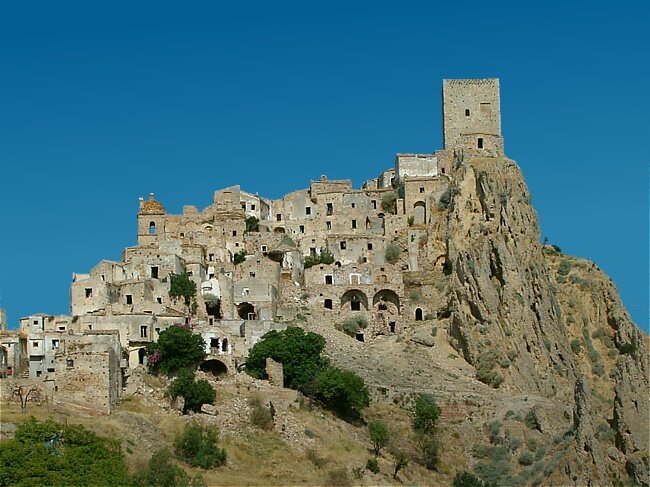Kalder: Key Locations of East Kalder

In the first entry of this new series of development blogs I gave a basic overview of Kalder, the setting for my current D&D 5e campaign. In this entry, I’m going over some of the key location in East Kalder where the campaign’s action and adventures take place. These locations are still developing, and East Kalder is still growing, but when the party first arrives in East Kalder these are the places that will play host to their first victories and defeats.
The Break – The first part of East Kalder most people experience, the Break is a thin strip up wasteland dividing East and West Kalder. The Break is a chaotic stretch of canyons, mountains, volcanic vents, and sulfur planes that was once the eastern coast of West Kalder. When East Kalder rose from the sea and rejoined its western counterpart, the collision of tectonic plates destroyed most ports and coastal cities. Still plagued by tremors and unpredictable volcanic activity, crossing the narrowest section of the Break is still a daunting challenge.
The Break is home to strange, hearty creatures who adapted to the chaotic environment seemingly overnight, and opportunistic reavers who prey upon caravans carting goods between east and west.
Big Sink – The heart of a region known collectively as The Sinks, Big Sink is built around the edge of a five-mile-wide vertical shaft the depth of which has never been ascertained. Small caves and lesser shafts branch off from the main shaft at random intervals leading to rich mineral deposits of every description. Prospectors scale the walls of Big Sink at all hours of the day and night seeking rare elements, while work gangs jealously guard rich deposits from claim jumpers and opportunistic scavengers. Surrounding Big Sink for miles are lesser sinks ranging in size from a few feet to a mile across. Work camps and shanty towns spring up around these lesser sinks and vanish just as quickly as mineral deposits are found and worked out. Big Sink remains the only permanent settlement in the area.
Boneyard Bay – The largest and only permanent sea port in East Kalder, the port of Boneyard is built over the remains of an ancient elf city on the coast of a natural bay surrounded by high sea cliffs. Merchantmen from as far away as the continents of Tan-Gow and Arktu regularly visit the Boneyard to trade and occasionally seek letters of marque from Admiral Aliz Greythorne, the Boneyard’s current ruler. Boneyard Bay is so named for the fossilized sea serpents imbedded in its protective cliffs.
Leviathon – One of East Kalder’s largest and oldest settlements, Leviathon is a city built in and upon the bones of a massive oceanic beast trapped on East Kalder when it first rose from the sea. First settled by knackers and alchemist seeking to harvesting the beast’s carcass, Leviathon was successful enough to become a self-sustaining city state. Bone pickers still make a brisk living harvesting bone, marrow, and teeth pried from the leviathan’s countless skeletal maws. Leviathon is ruled by the Bone King, a former bandit who came to prey upon bone pickers but found greater success organizing work gangs through violence and intimidation. The Bone King rules Leviathon like a gang boss, ruling through a mix of respect and fear, and playing rival factions he cannot control outright against each other. The Bone King is also supported by the Bethel Rictus, a cult headquartered in the leviathan’s skill with which he maintains an alliance of convenience.
Muckwater – A stinking swampland taking up much of the heart of East Kalder. The Muckwater was created when East Kalder first rose from the sea, draining seawater and silt into a depression in the middle of the continent. Only the hardiest organisms can survive in the black, soupy runoff that makes up the Muckwater, though several tribes of goblinoids and desperate humanoids often try. Settlers in East Kalder frighten their children with tales of amphibious horrors from the bottom of the sea now said to lurk in the Muckwater. Every year hundreds of explorers and treasure hunters vanish in the Muckwater seeking out elfin ruins supposedly protected by primordial beasts.
Tel Glyphton – Also known as the Scribe’s Settlement or the Word Mines, Tel Glyphton is a town built over the remains of an earlier settlement built over the remains of a buried elf city. Glyphton is so named because the walls, ceilings, and chambers of the elf city that serves as its foundation are decorated with archaic writing in First Speech, the primal language of the elves. Histories, legends, philosophical texts, and spell formulae are engraved on every surface, and the people of Tel Glyphton earn their coin leading expeditions into the catacombs to recover forgotten lore and selling rubbings taken from the ancient walls. Spellcasters from across Kalder visit Tel Glyphton each year to learn potent spells and recover metaphysical secrets lost to the modern age.